Independent Research
Junior/senior level experience in sculpture.
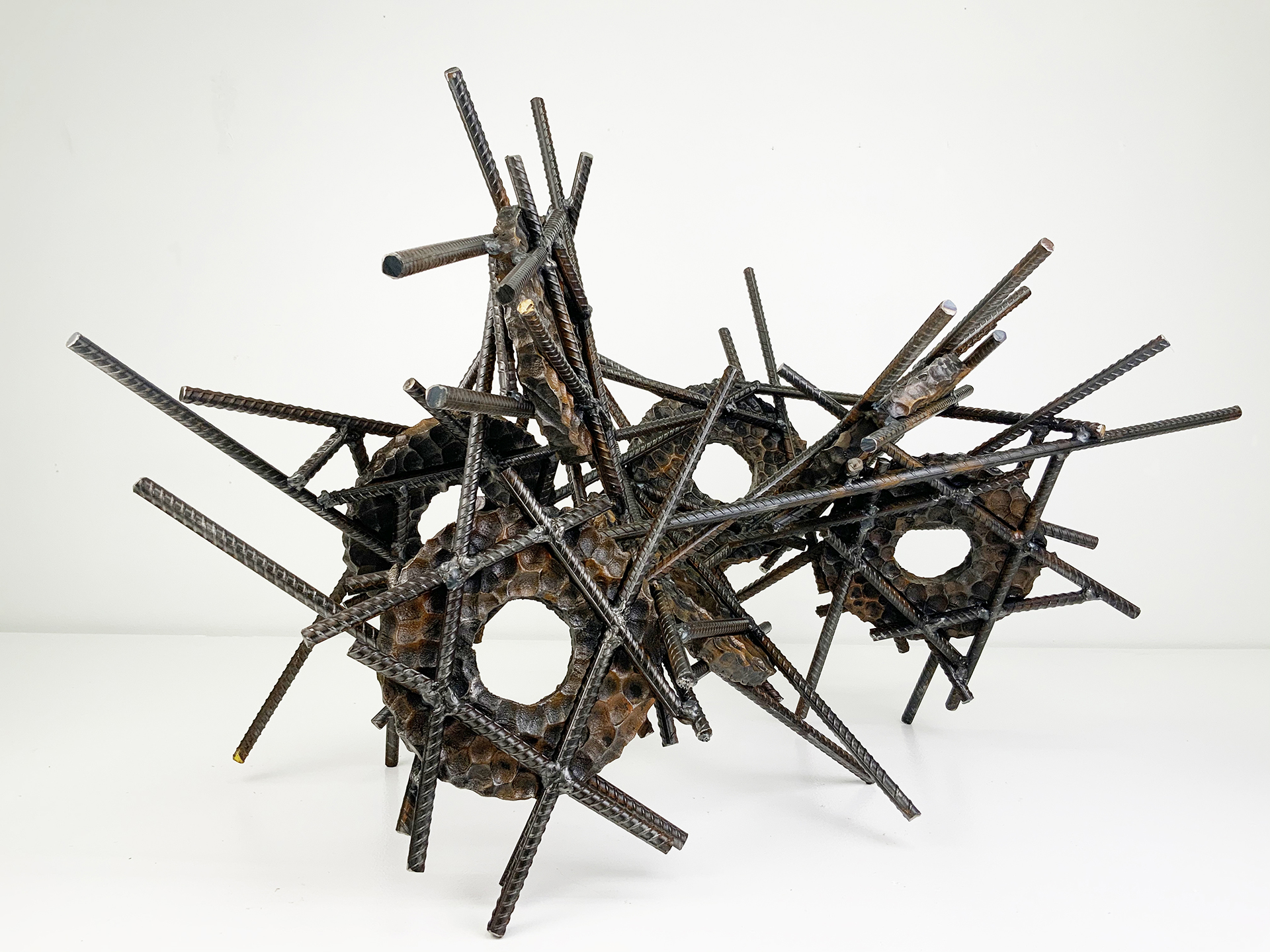
Sculpture Works
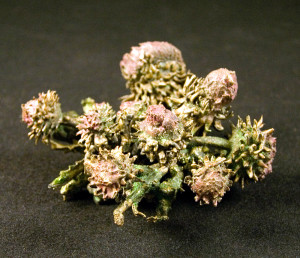 Mission: (Project Description)
Mission: (Project Description)Hollow lost wax casting method: A unique wax pattern will be developed using plaster and rubber molds. The wax pattern will be taken through the “Lost Wax Process” to create a unique bronze or aluminum sculpture with a patina or alternative finishing method. Individual students have a choice to cast a wax form presented from a previous course or to create a new hollow casting for this project. A hollow lost wax casting method is the only technical criteria. If a new casting is to be produced, you are encouraged to create a composition and concept that pushes the envelope of this level course.
This project will challenge and further introduce the student to the processes of casting metal. A traditional investment material of plaster, silica sand and silica flour will be used for this project. The student should show an understanding of the methods listed below. A metal form will be cast and finished by the student.
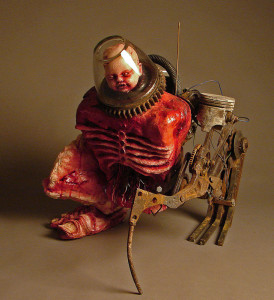 Exquisite corpse or Cadavre exquis is traditionally a drawing technique where a bank of words or images are collected, and assembled to create a finished composition. This project explores this surrealist idea in an assemblage of components to create an “Exquisite corpse” sculptural artifact.
Exquisite corpse or Cadavre exquis is traditionally a drawing technique where a bank of words or images are collected, and assembled to create a finished composition. This project explores this surrealist idea in an assemblage of components to create an “Exquisite corpse” sculptural artifact.
In this project, the student is asked to create five artifacts from the inventory of objects created from previous mold-making assignments. Students are allowed to melt, cut, deconstruct, and transform existing objects and reassemble them into unique sculptural forms/figures. The final form may be prepared as if to be cast in metal using the gating method for the traditional investment lost wax method. Other materials may be added. Attention should be given to how additional materials are fastened to the wax objects. Note whether objects will remain as original material or be cast pin metal.
Learn the process of developing a metal casting using a two-part sand resin bond mold. The first part of the project will be to create a pattern using a variety of methods and materials. Mixing sand and resins the student will create a mold. The mold will be used to create a void to pour metal. The metal sculpture will then be finished accordingly. The student will be graded by keeping a schedule with the processes of the assignment as well as the finished form. Keep up, so you do not fall behind.
 Mission: (Project Description)
Mission: (Project Description)Create a sculptural form/structure that develops from the linear quality of welded, and fabricated metal. The final form should have a sense of variety and repetition of elements. Add a skin to some or all components of the structure. Develop an aesthetic in the connection of skin to form.
It is expected that a concept be developed that will draw the viewer into a transformed space. A linear form should be the initial aesthetic, creating a structure that defines a new space. Lines, shapes, and forms may be curved or straight, yet the artist’s intent must be obvious and well-crafted.
Within this project, we will bring into question the “skin” of an object, and how alterations to it develop our perceptions of the object. Many artists, such as Meret Oppenheim, Lucas Samaras, and Joseph Beuys, have pursued this concept creating works that question or negate an object’s original function. The simple manipulation of a surface can allow strong conceptual narratives to develop, speaking to a greater importance beyond the original object.
Transform: v. 1 make a thorough or dramatic change in the form, appearance, character, etc.
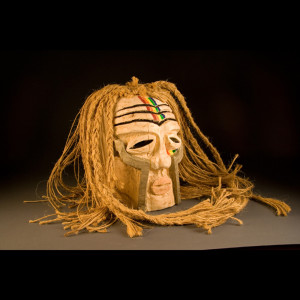 Mission:
Mission:In this project create a wood carved mask that visually merges early and contemporary icons. The mask should take on a combination of both icons chosen. The main material will be wood, other materials can be used to embellish the form. Try to use materials that are a part of our current culture. Accumulated objects or components of devices we use might be good resources. A visit to the salvage yards will be a good resource as well.
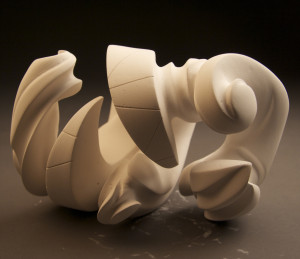 Mission: (Project Description)
Mission: (Project Description)Using two forms build one, morphing the forms together to become a non-objective or abstract formal composition. The original forms are to be used as inspiration to assist in guiding the form. Use elements from each, yet develop your sculpture as a unique entity with an elegant form and a clean aesthetic. Original chosen objects may be mechanical (man-made) or natural.
Project Gallery
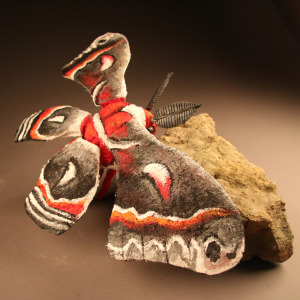
In this project, the student is asked to create a sculptural form from wood material. The form does not necessarily need to look like a specific thing. It may be non-objective if desired. If the goal is to create a representation of a real object, a model should be made available. As a basis, 2×4 material may be purchased.
The human body and its components allow us to understand facets of identity such as gender, sexuality, race, and ethnicity. Slight gestures can represent emotion, mood, and intent. Subtle and extreme alterations of the body, such as hair, skin, and clothing can suggest alignment with or rebellion against social conventions and to express ideas to others. Many artists explore visual expression through representations of the body and by using their bodies in their creative process. The poetry of bringing objects together to suggest or make strong statements can sometimes be elusive. Not only does one need the right objects to build a dialogue, but a keen observation of craft is important in developing a poetic voice that does not distract the artist’s intent.
Create a sculptural form using elements from the human body and at minimum one other form. A cast component, plaster, or other material, of the body, will be a basis for their research. Other materials are not only encouraged but also expected in the final solution.